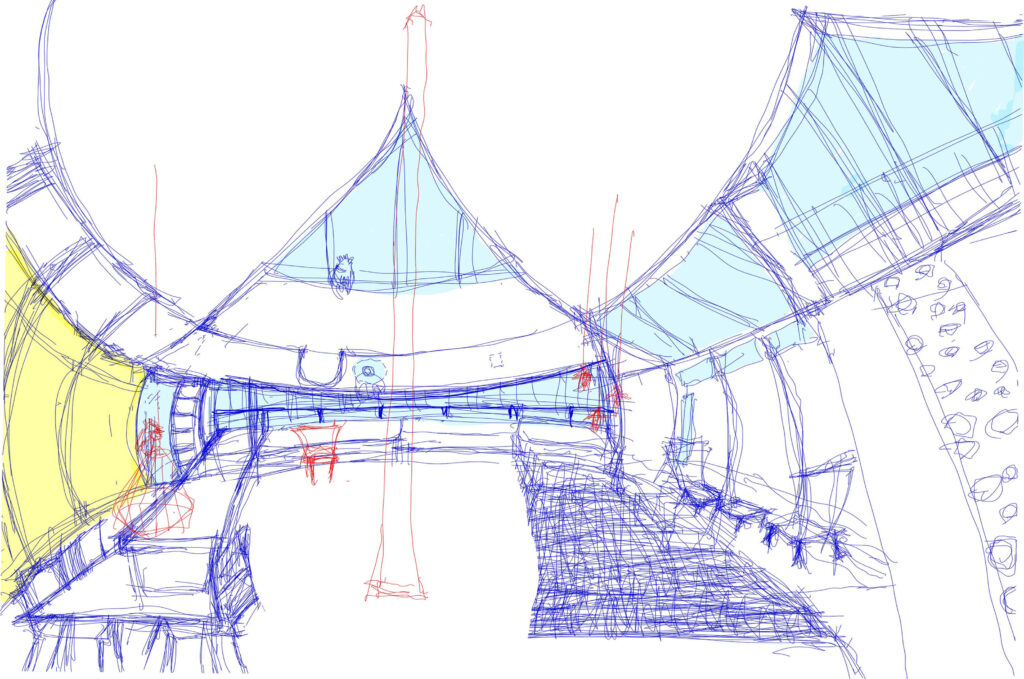
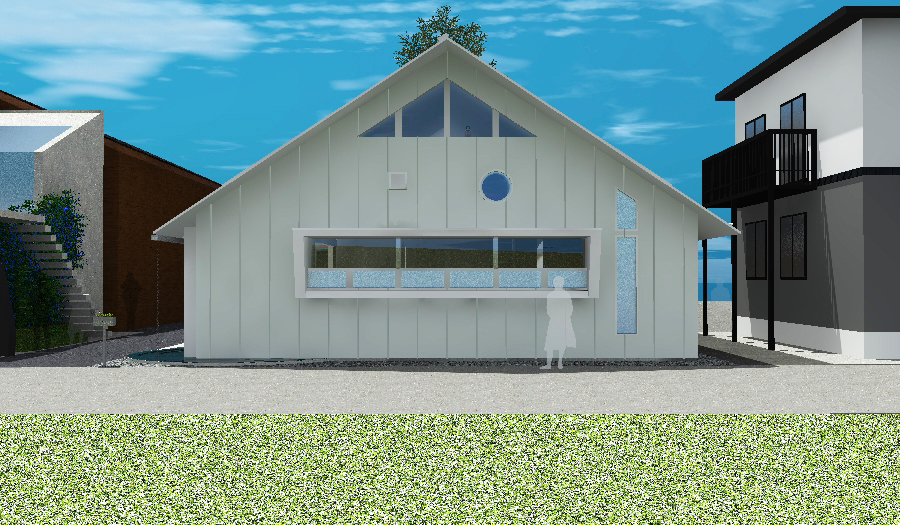
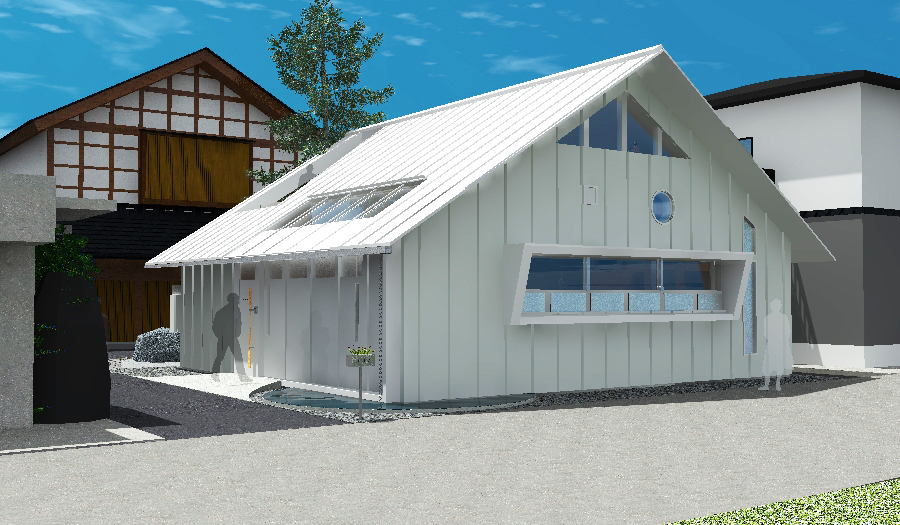
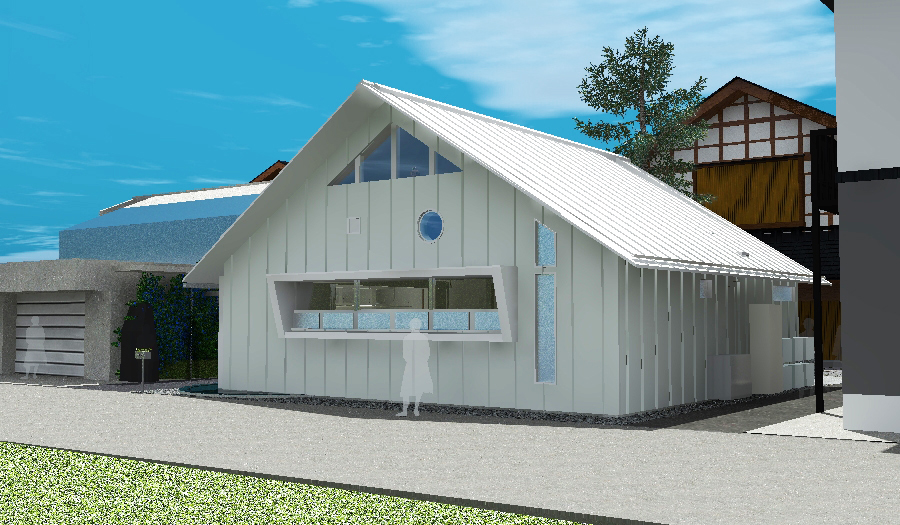
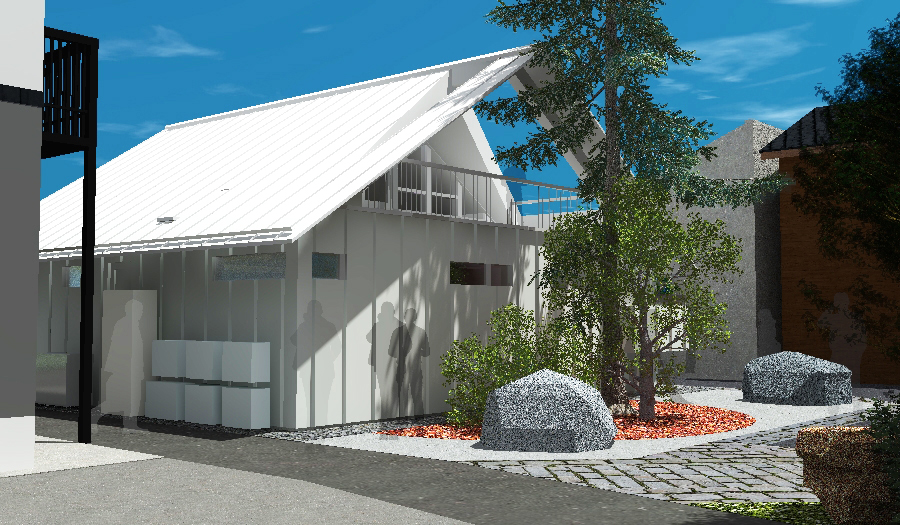
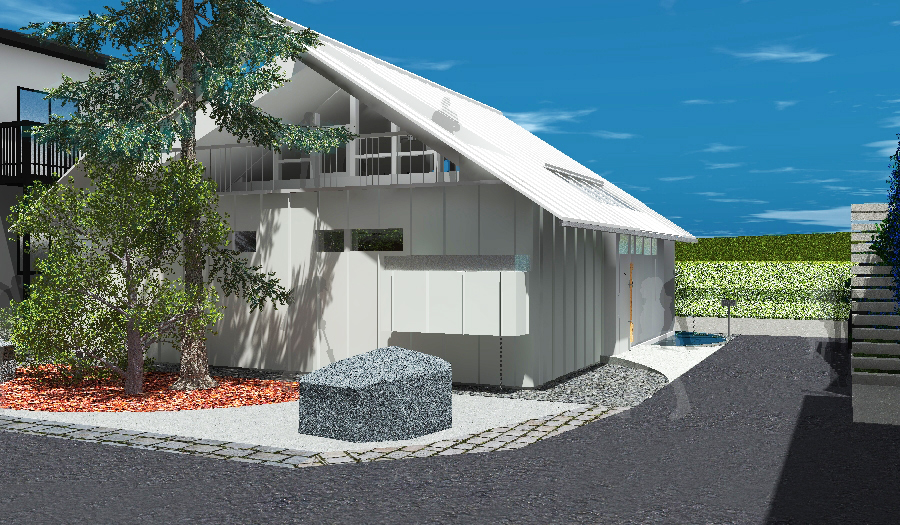
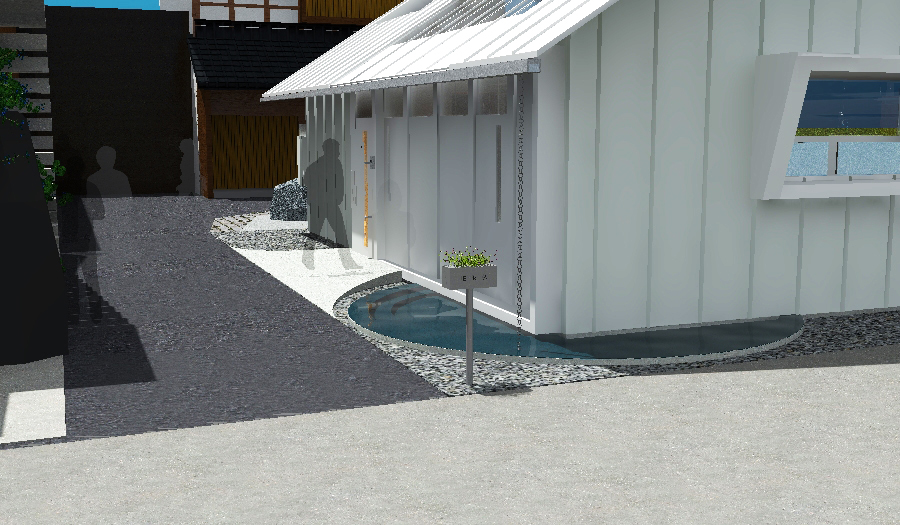
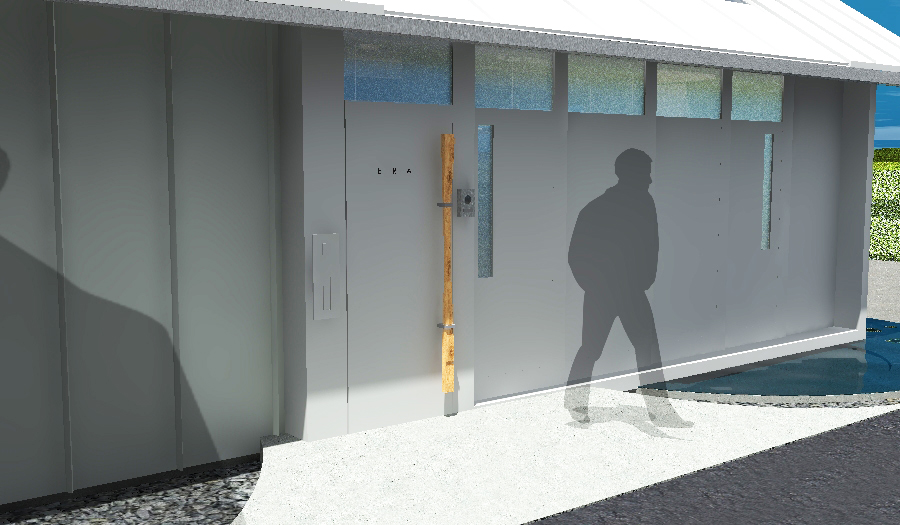
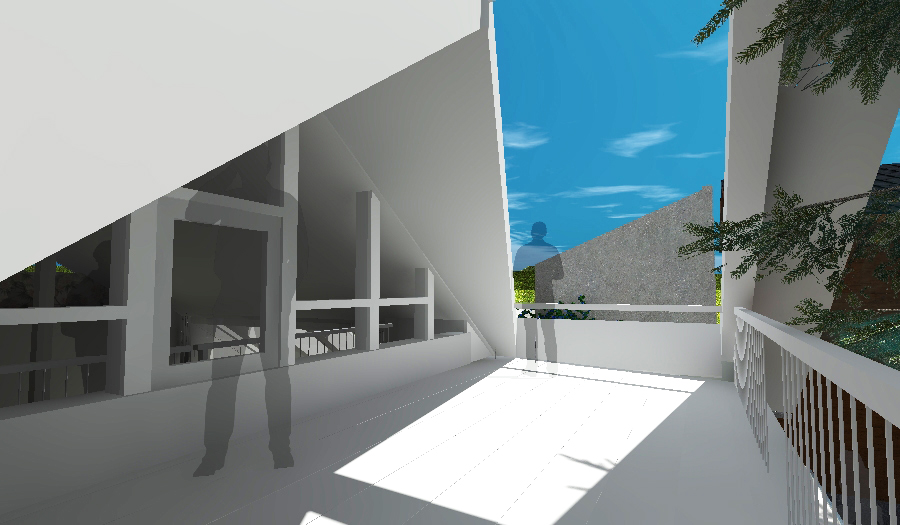
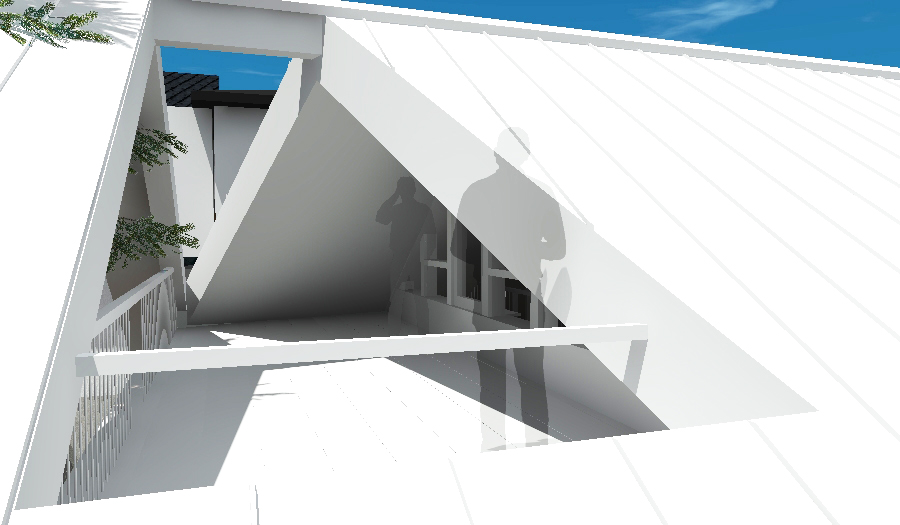
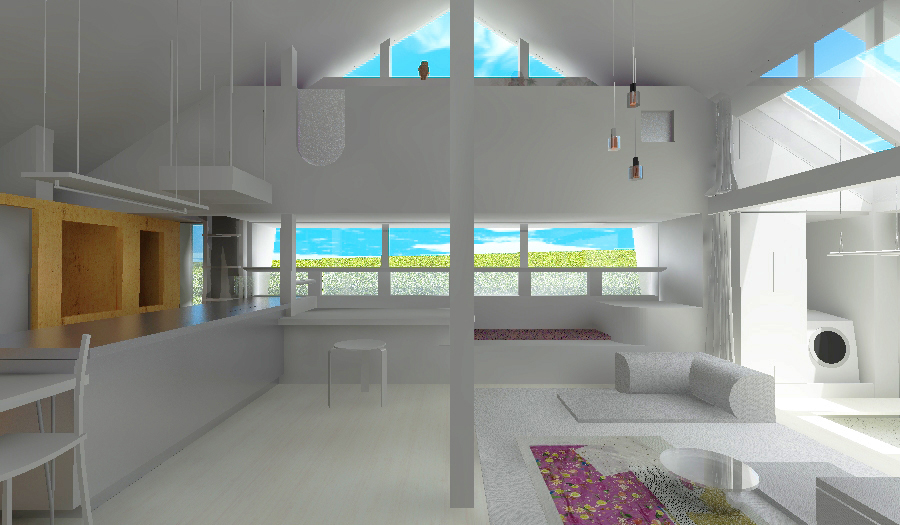
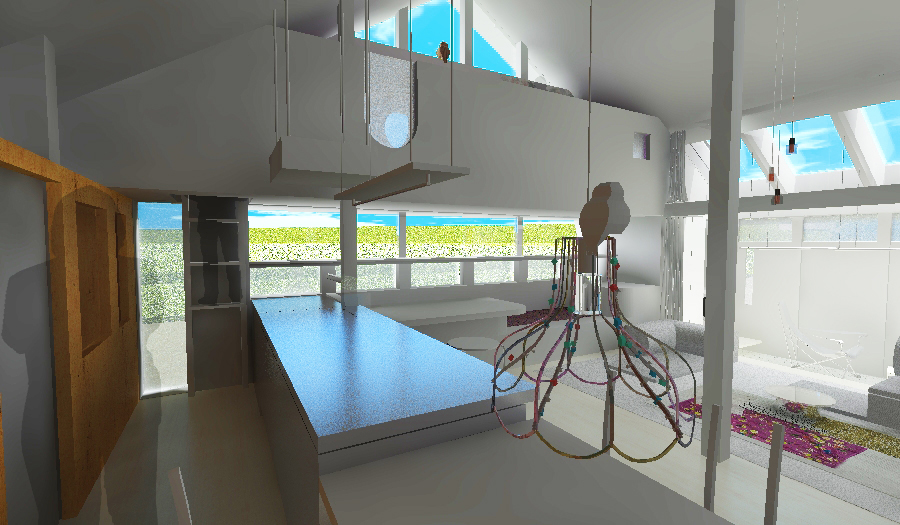
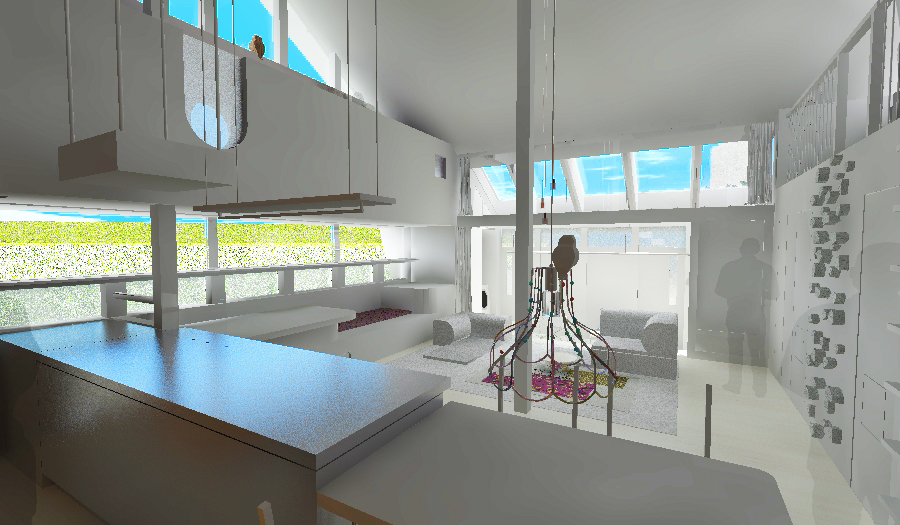
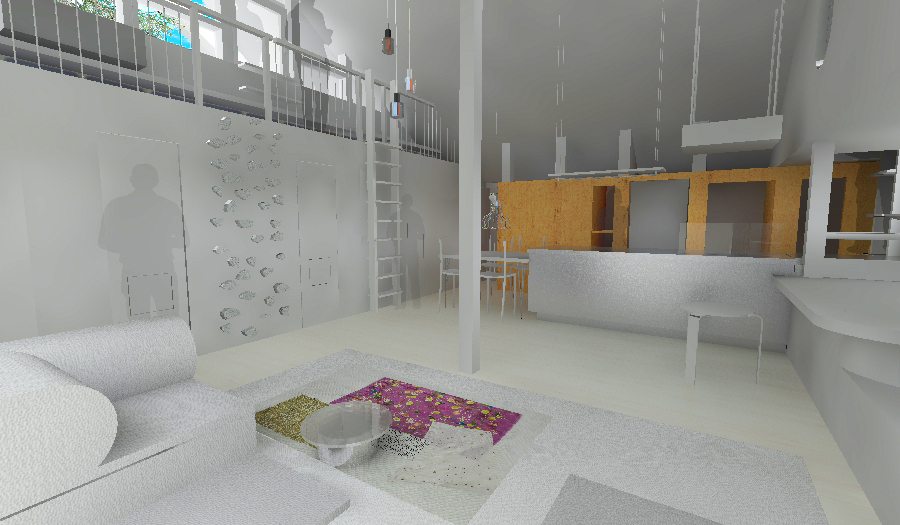
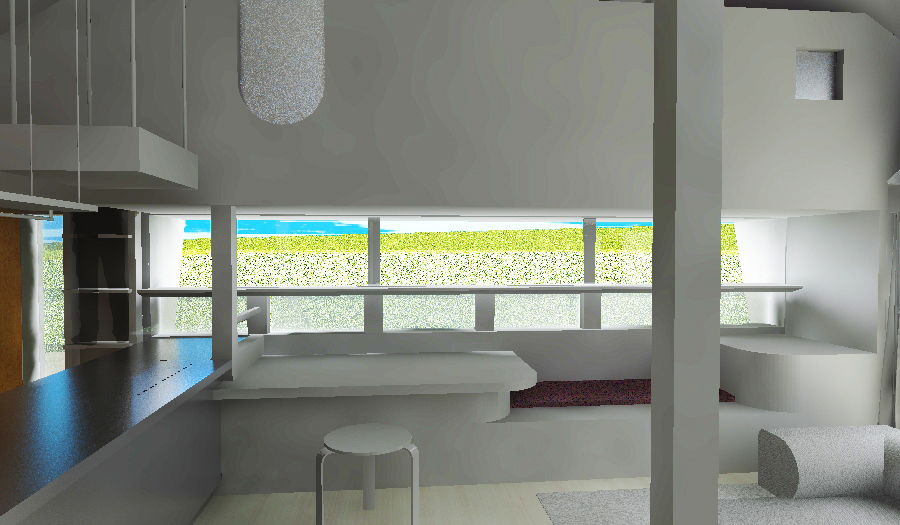
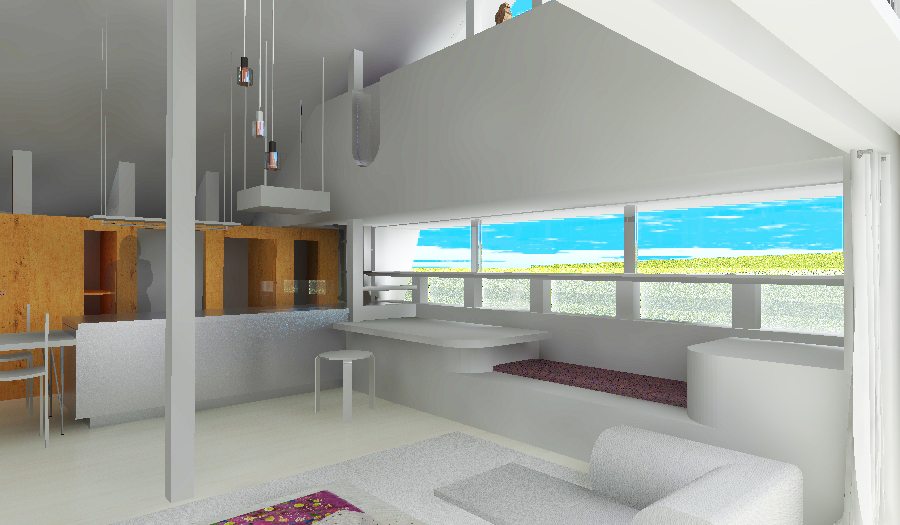
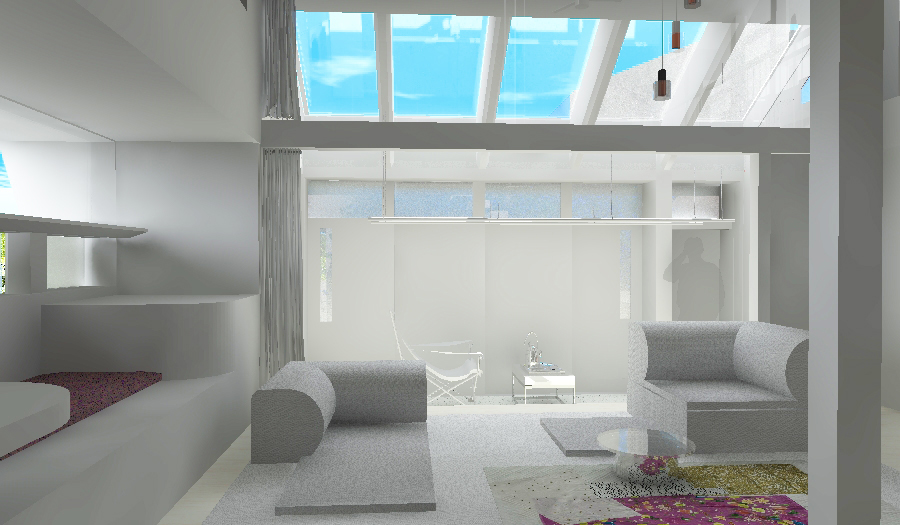
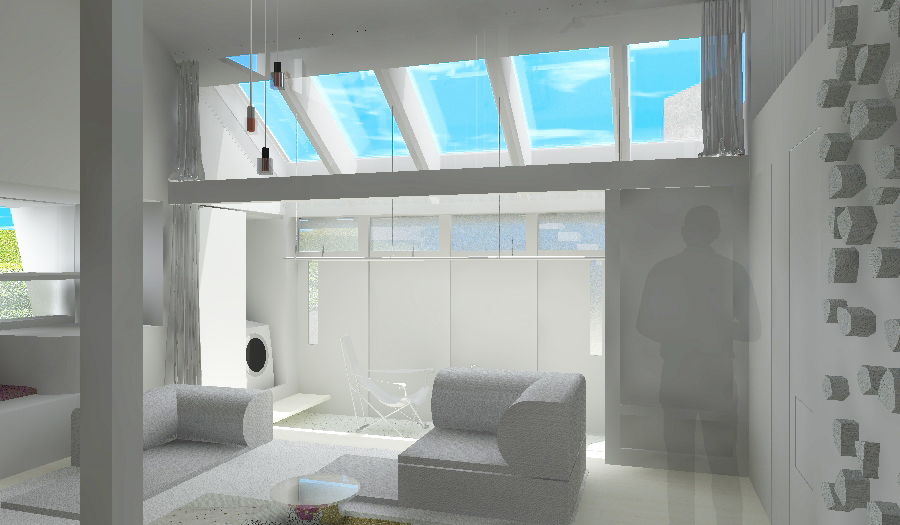
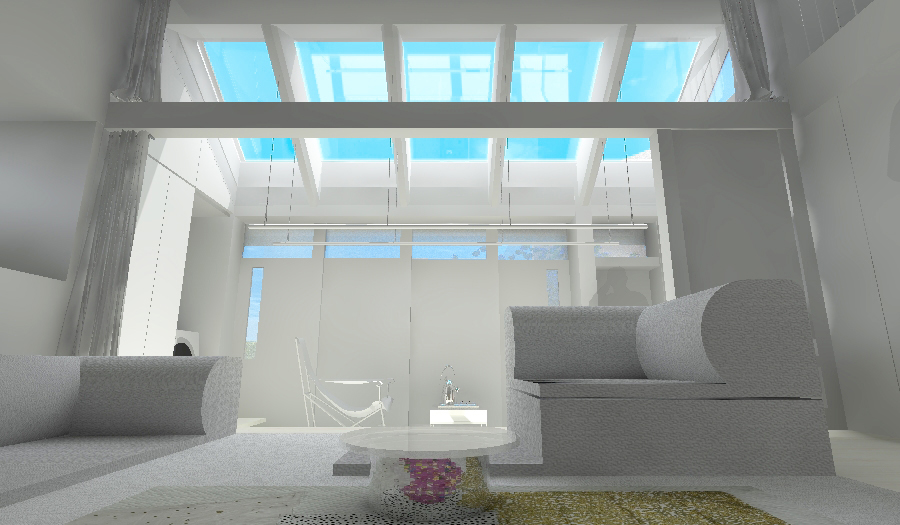
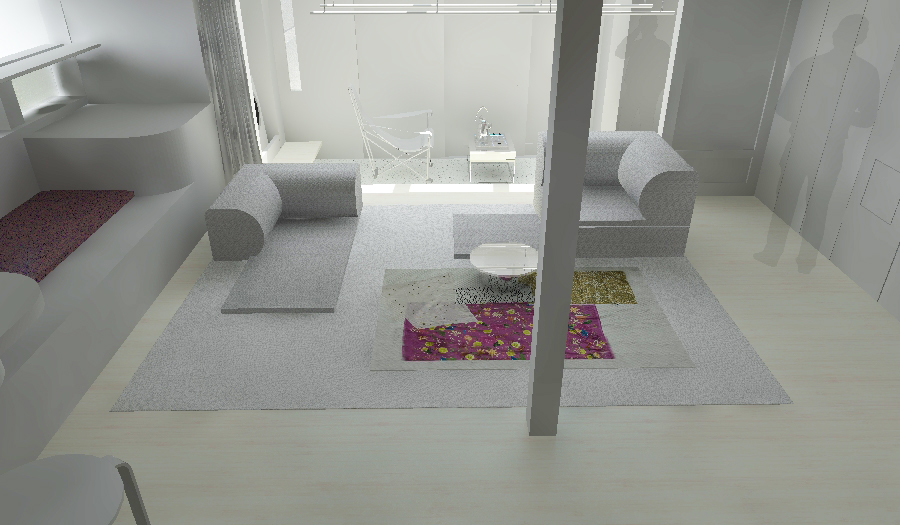
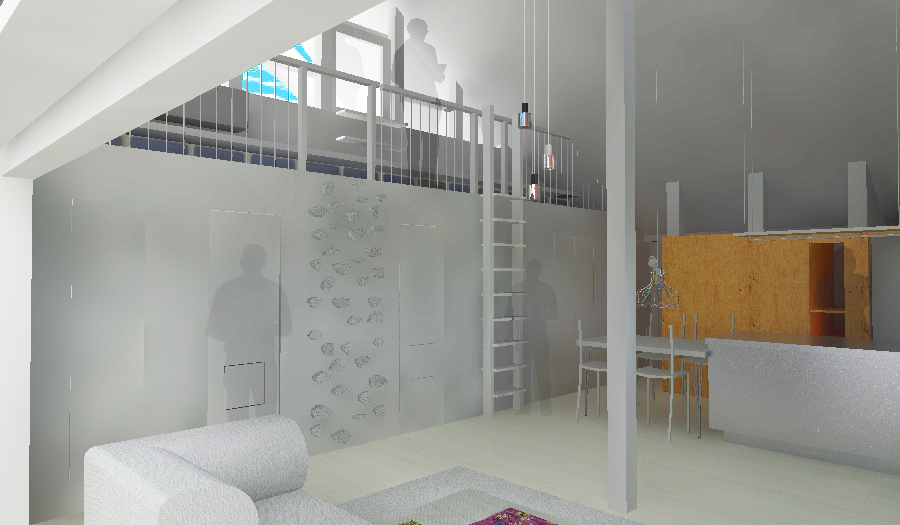
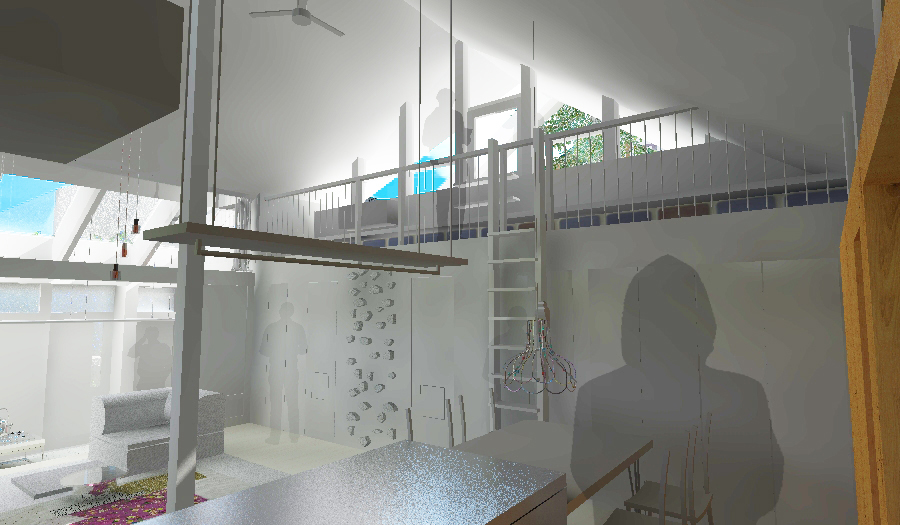
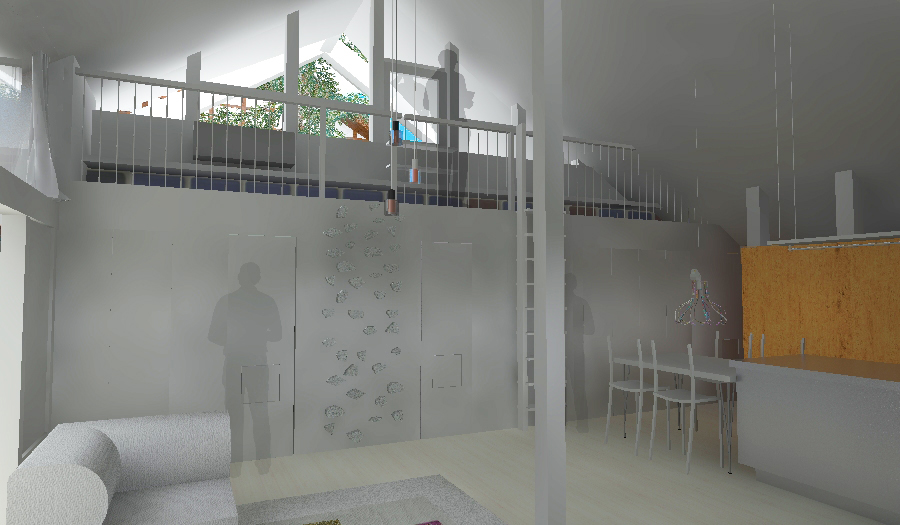
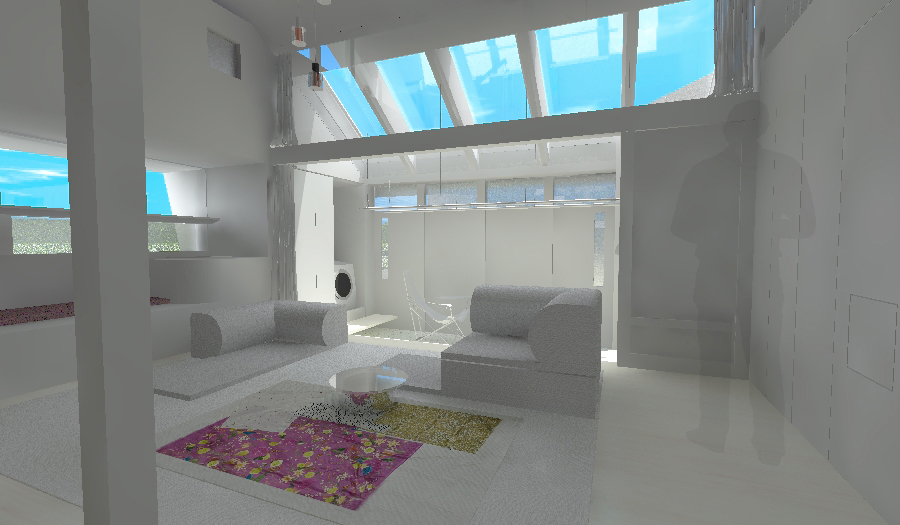
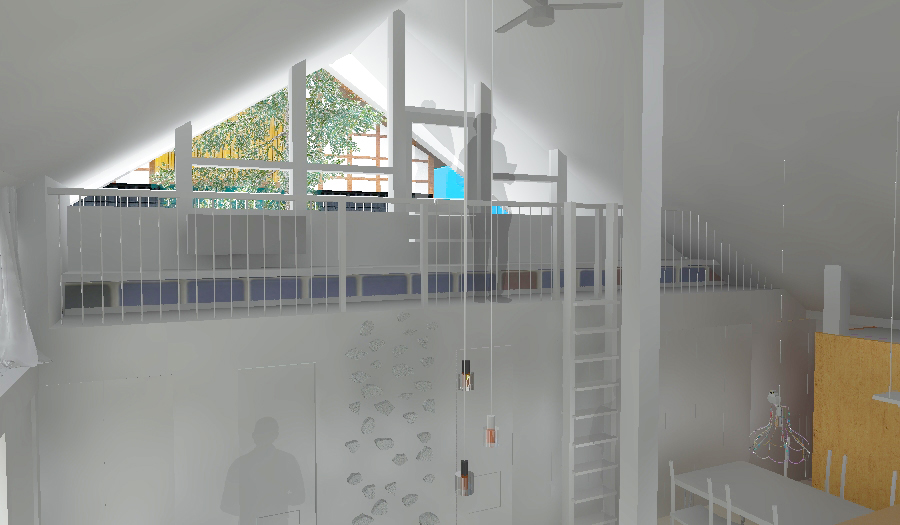
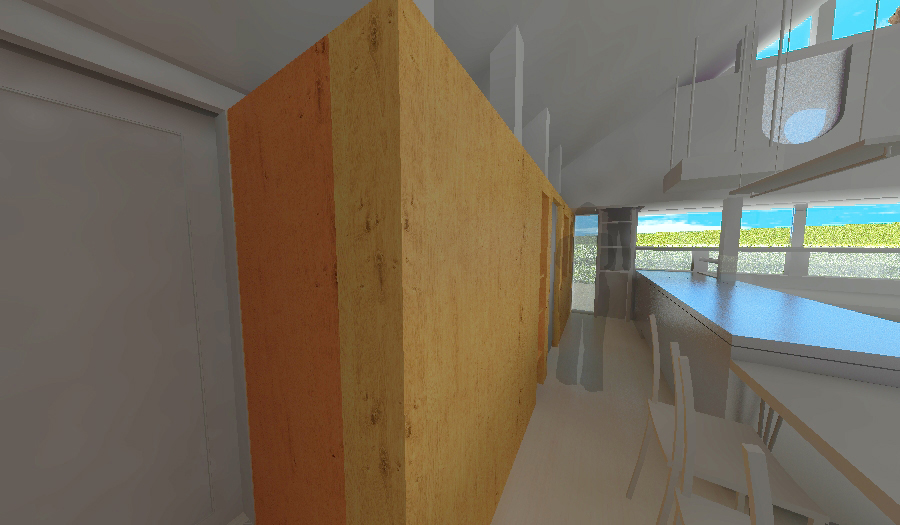
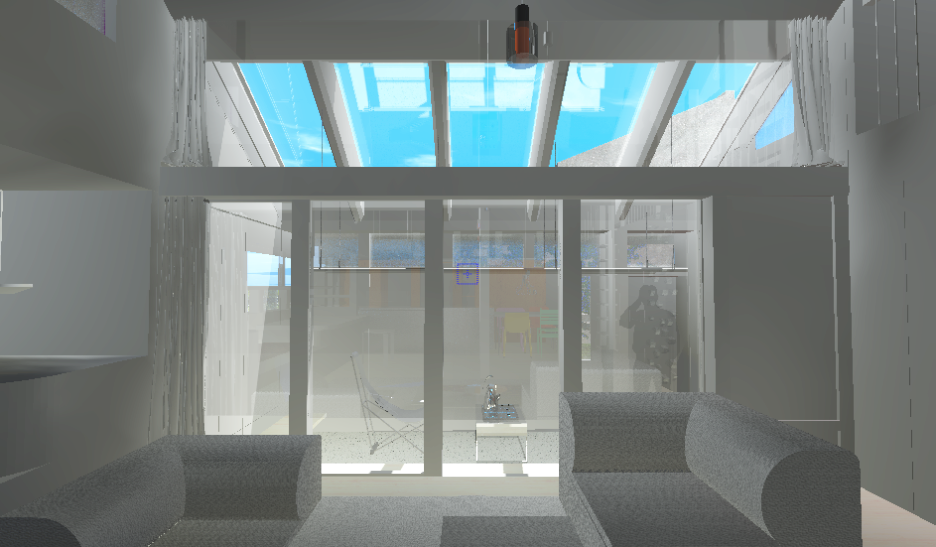
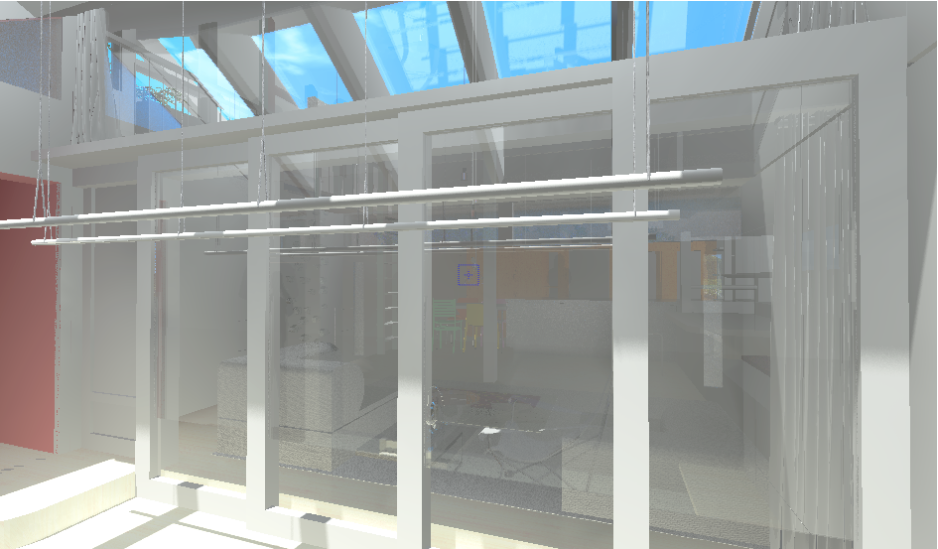
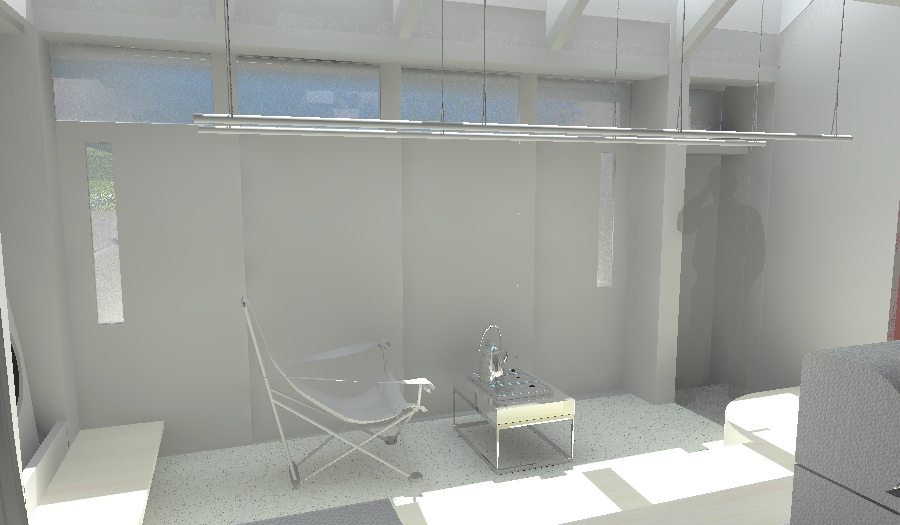
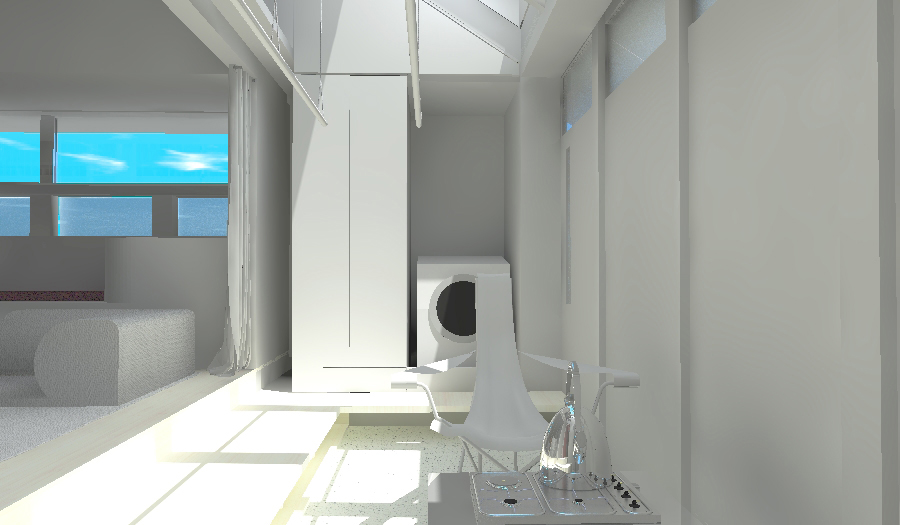
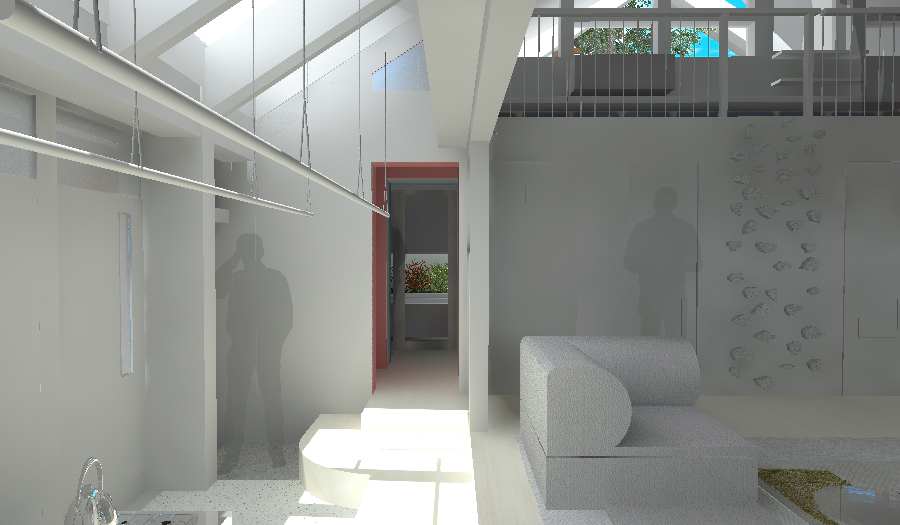
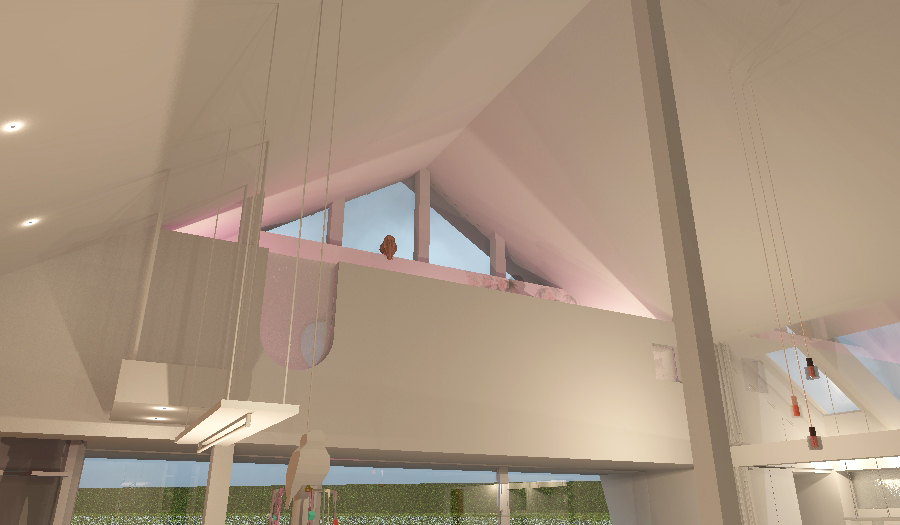
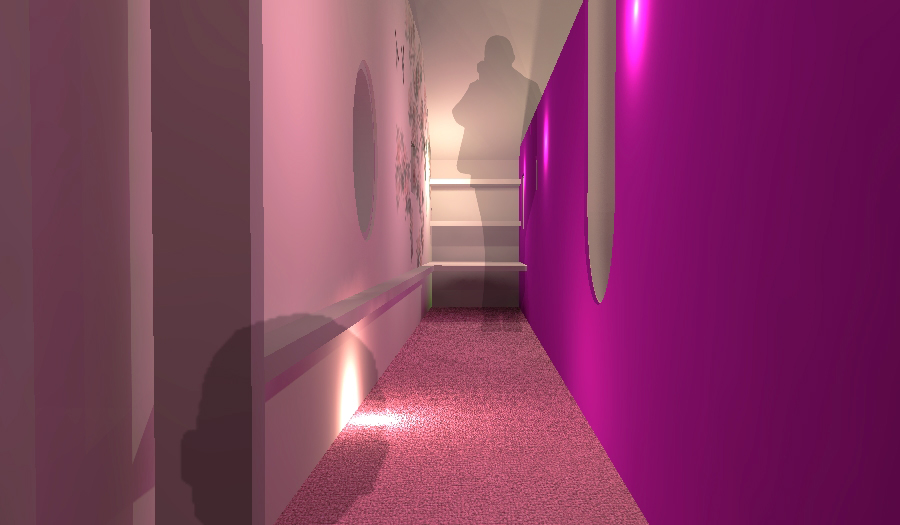
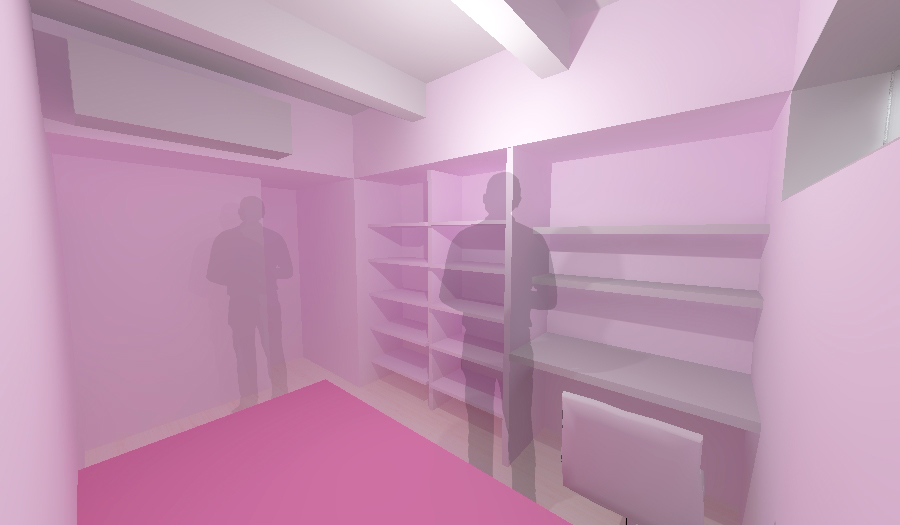
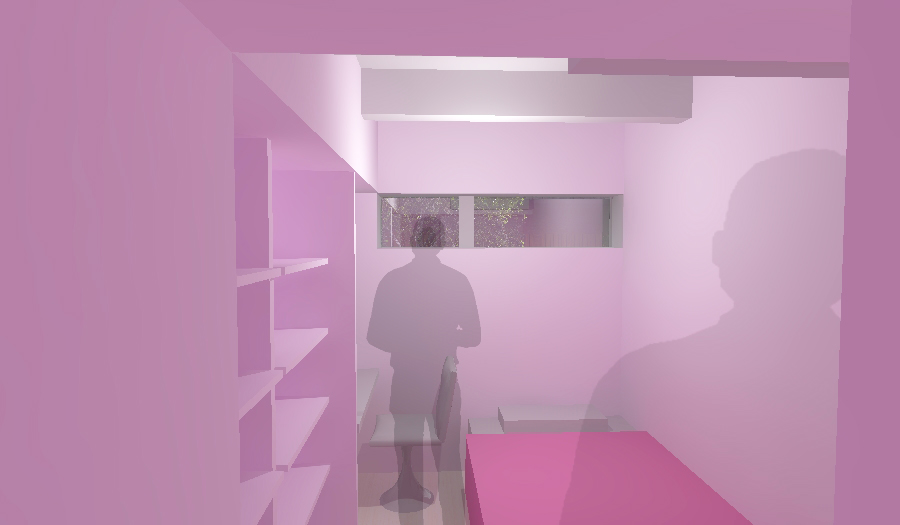
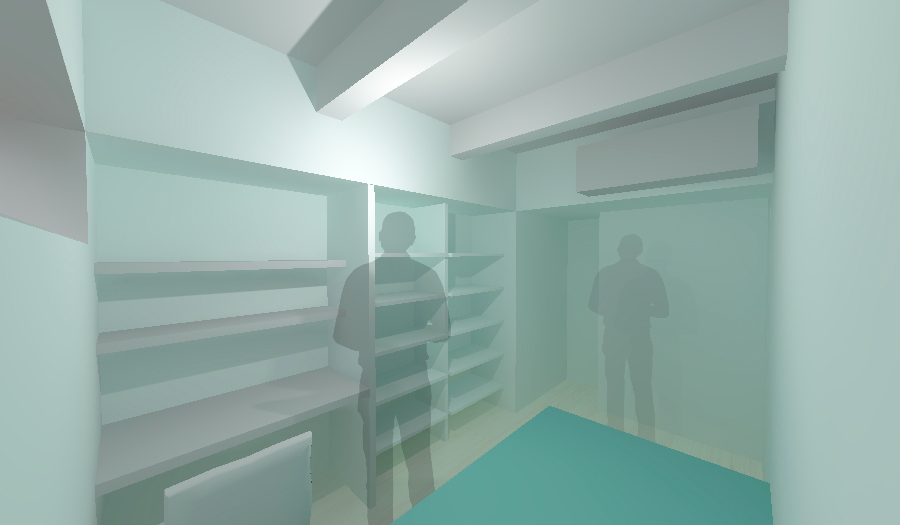
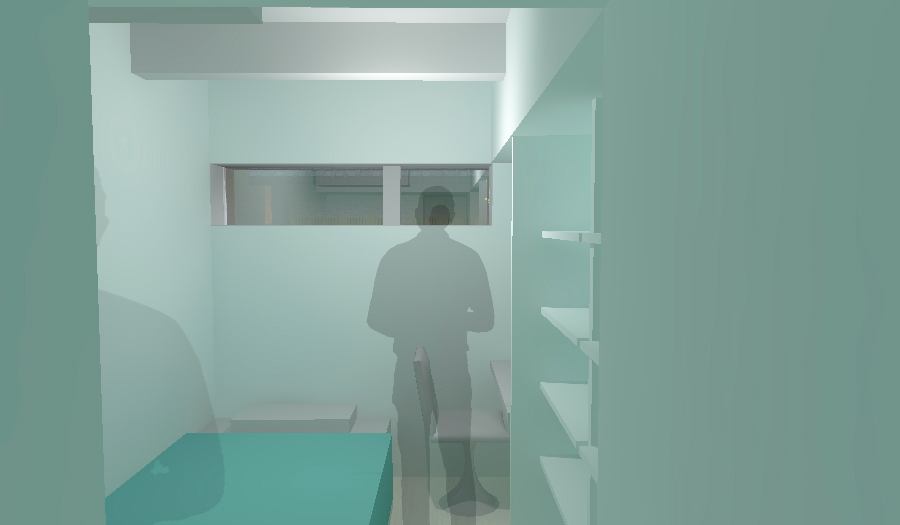
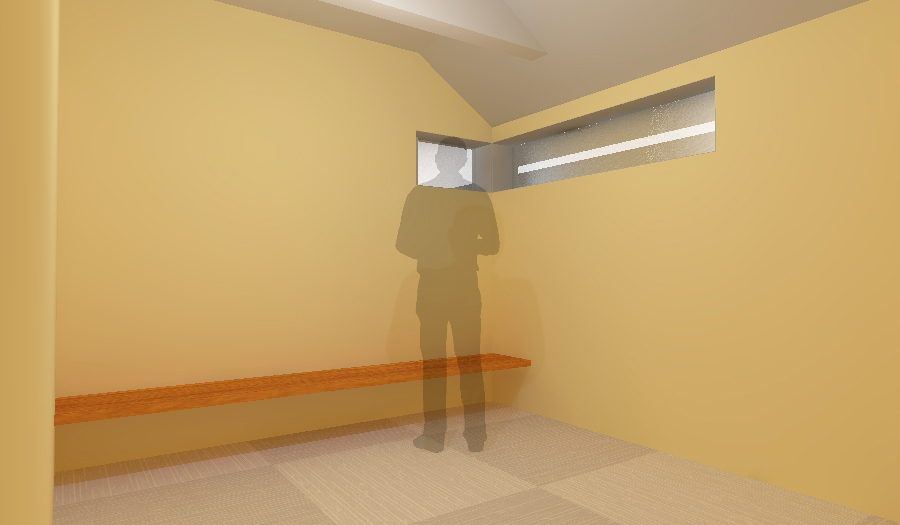
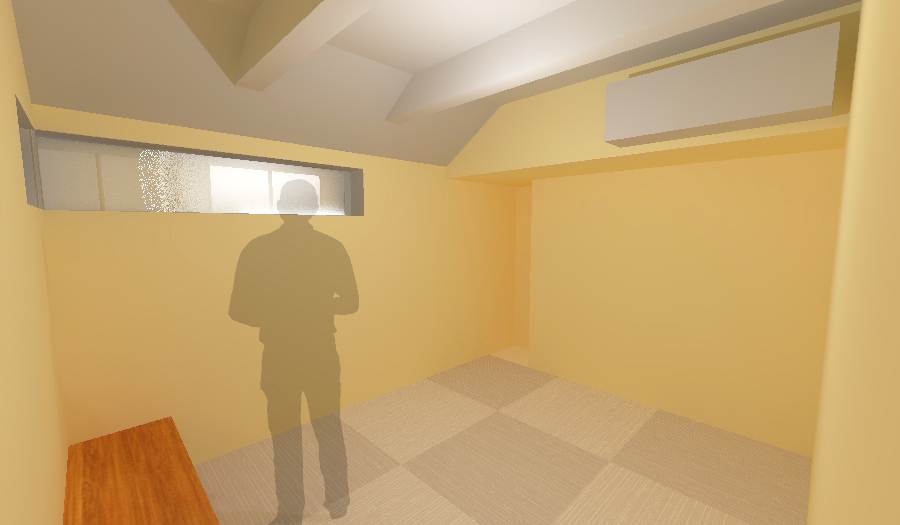
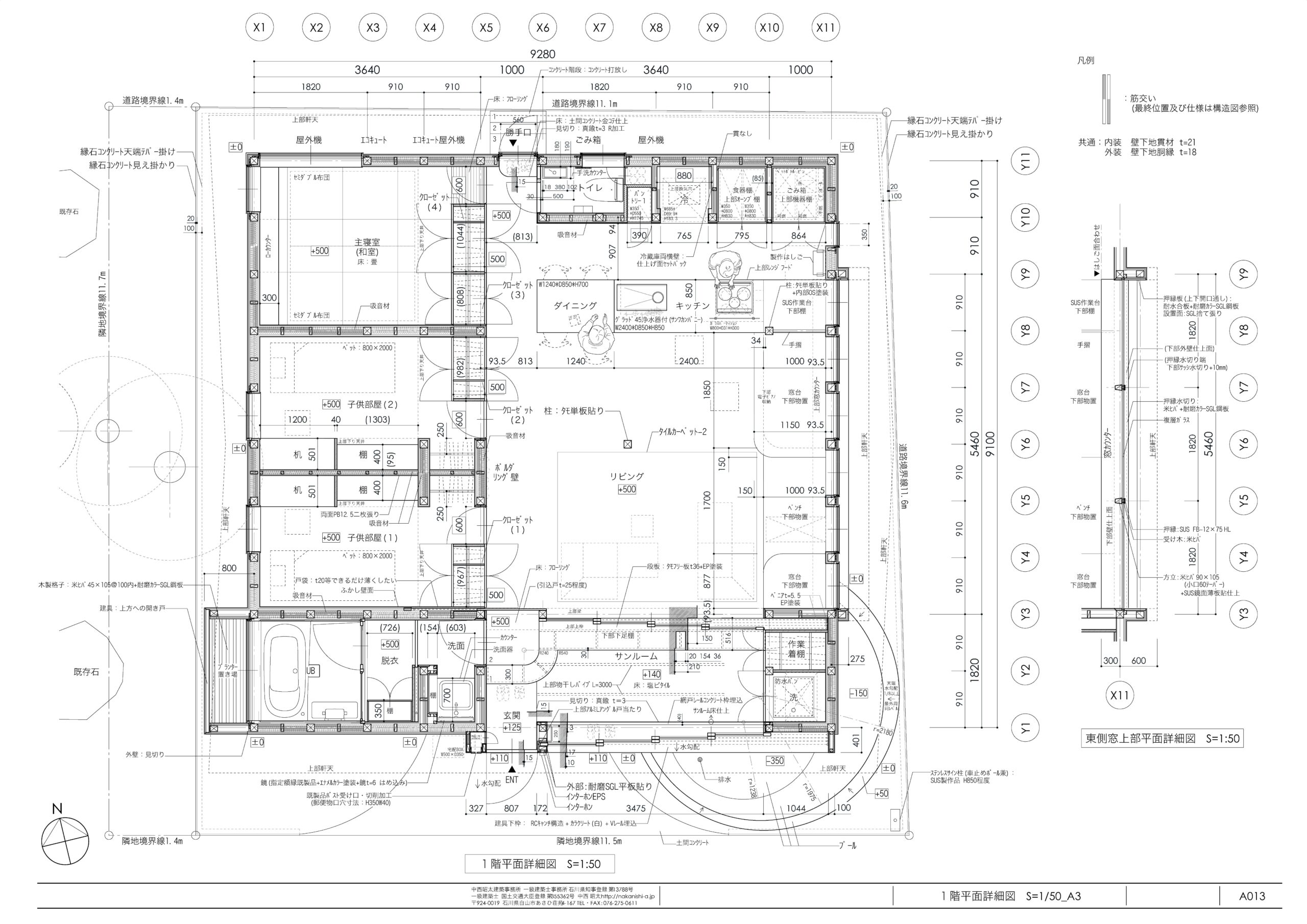
調和する暮らし
(English Below)
敷地は、石川県白山市の手取川扇状地の中心、島状にたたずむ複数の集落群のひとつに位置する。
この地域では、先祖から受け継いだ広い敷地を所有する家系が多く、子世代が親世代から離れて住むことが多くなった現代において、同一敷地内に二世帯が別棟で近接して住む傾向が顕著に見られる。これは、Uターンして親世帯の敷地内に自邸を建てることを選んだ家族のための住宅計画である。
住まい手の要望は、母屋に近接しながらも、家族のプライバシーが十分に守られる居住空間の確保であった。そこで、親世帯と適度な距離を保ちながらも、自然環境を十分に借景でき、その借景した風景と住まい手の生活風景が調和する開放的な開口を計画し、周辺環境と住まい手の心身の動きが相応する親和性の高い住宅を目指した。
プライバシーを守るために、単一方向の大開口ではなく複数の点在した開口とし、季節や時間ごとに変化する広大なランドスケープを借景できるような計画としている。また、家型の造形の面と面が接する線を消すような開口を配すことで、風景を絵のように見せるのではなく、内部の延長に広がる空間として感じられるようにした。ビビッドな配色のインテリア、物が露出しがちな日常の生活風景と、窓越しの風景を調和させるために、メイン空間の床、壁、天井を真っ白な配色とし、開口はその白い面の連続が失われないようなサイズや配置となるよう注意した。
風景を見る時の身体状態や精神状態を細かにヒアリングし、多様な状態で生活する人と自然環境との調和を図った。立位や座位、活動している時や休んでいる時のあらゆる体勢において、人と自然環境の関係の最適な状態を探った。
ランドスケープに加えて、自然環境が発するサウンドスケープにも着目し、地域特有の環境音と人の生活環境を調和させるための緻密なデザインを施した。田園側の外壁面に、風景を切り取る水平連続窓とは別に、大地に流れる風や環境音をほしい時にほしい分だけ、ほしい場所に調整して取り入れることのできる連窓の滑り出し窓を計画した。この滑り出し窓からは、地面から発せられる環境音を天井から水平方向の範囲で取り込むことができるが、わずかに開けた場合は天井方向にのみ取り込まれるため、反射音が消え、窓際に座る人だけに聞こえるプライベートな音となる。連窓の複数を大きく45°に開けた場合は、強く聞こえる直達音がキッチンに立って作業する人やダイニングで座っている人には明瞭に届き、リビングの床でくつろぐ人には天井に反射したやわらかな音が届く。住まい手が、必要に応じて取り込む環境音を微調整できる機能が備わった。
効果的に切り取られ配置された複数の開口を活かした建築デザインは、住まい手家族のプライバシーをしっかり守りながらも、自然環境と調和しながらのびのび生活できる住空間を実現した。
・
・
Living in Harmony
The site is located in the center of a fan-shaped area of the Tedori River in Hakusan City, Ishikawa Prefecture, in one of a group of villages that stand like islands.
In this area, many families own large plots of land inherited from their ancestors, and there is a marked tendency for two families to live in close proximity to each other in separate buildings on the same site, even as the children’s generation is increasingly living away from their parents’ generation. This is a housing plan for a family that chose to make a U-turn and build their own residence on the site of the parent family.
The residents’ desire was to secure a living space that would be close to the main house, yet still provide sufficient privacy for the family. The aim was to create a house with a high degree of affinity between the surrounding environment and the residents’ physical and mental activities, by planning openings that would allow the residents to enjoy a view of the natural environment while maintaining an appropriate distance from the parent household, and by harmonizing the borrowed scenery with the residents’ living space.
In order to protect the privacy of the residents, multiple openings are scattered throughout the house instead of large openings in a single direction, so that the vast landscape, which changes with the seasons and time of day, can be borrowed. The openings are arranged in such a way as to erase the lines where the house’s surfaces meet, so that the landscape is not presented in a picturesque manner, but rather as an extension of the interior space. In order to harmonize the scenery through the windows with the vividly colored interior and the daily life scenery that tends to expose objects, the floor, walls, and ceiling of the main space are pure white, and the openings are sized and placed in such a way that the continuity of the white surfaces is not lost.
We interviewed the residents in detail about their physical and mental states when viewing the landscape, and sought to harmonize the natural environment with people living in various states. The optimal relationship between people and the natural environment was sought in all positions, including standing, sitting, active, and resting.
In addition to the landscaping, we also focused on the soundscape emitted by the natural environment, and created a precise design to harmonize the environmental sounds unique to the area with the human living environment. On the exterior wall on the side of rice fields, in addition to the horizontal continuous windows that cut through the landscape, a series of projected windows were designed to allow the wind and environmental sounds flowing over the land as and when they are needed, and where they are needed. These projected windows can take in environmental sounds emanating from the ground in the horizontal range from the ceiling, but when opened slightly, they take in only in the direction of the ceiling, so that reflected sounds disappear and become private sounds that can be heard only by the person sitting by the window. When multiple windows are opened at a wide 45° angle, the strong direct sound reaches people standing in the kitchen or sitting in the dining room clearly, while the soft sound reflected from the ceiling reaches people relaxing on the living room floor. The system has the ability to allow residents to fine-tune the ambient sound to their needs.
The architectural design, which utilizes multiple openings that are effectively cut and positioned, allows the residents to live freely and in harmony with the natural environment while protecting the privacy of the family members.
